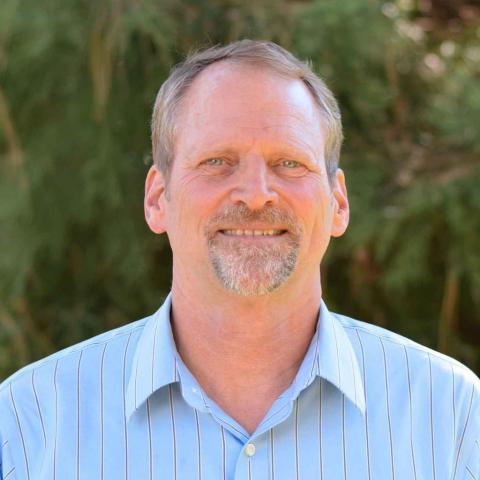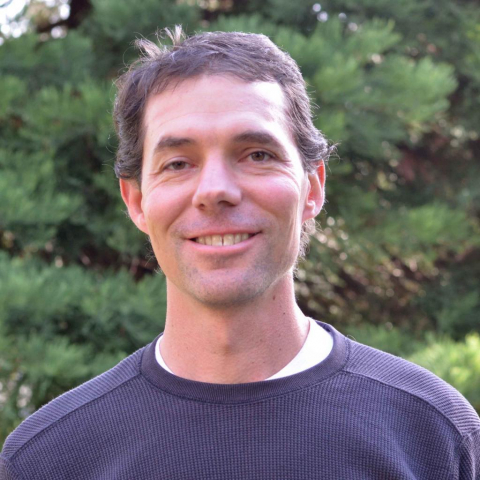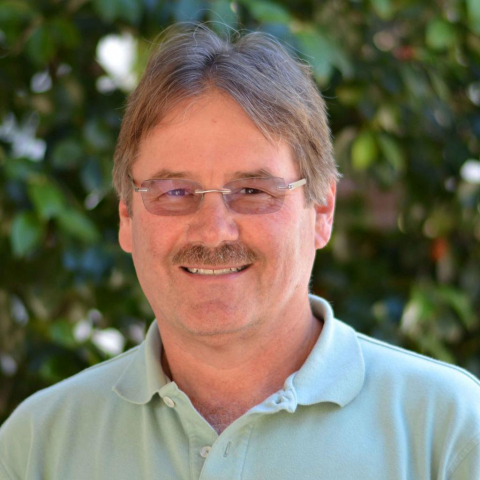Do, Document, and Disseminate Project for GHG Benefits of Fuels and Forest Health Treatments in California
The Berkeley Forests Fuels and Forest Health Treatments project was funded in 2015 through a Greenhouse Gas Reduction Fund grant under the Demonstration State Forest Research program. The project is expcted to result in a net carbon emission reduction of 39,065 metric tonnes of carbon dioxide equivalent (CO2e). A summary of the projects to be implemented as part of this program is provided below.
Introduction
California’s timberlands are a substantial carbon sink, annually sequestering around 2.2 mtCO2/acre via photosynthesis across all ownerships (Christensen et al 2018). However, tree mortality in over-stocked and fuel-heavy forests driven by competition, insects, pathogens, and high-severity wildfires, however, can reduce net sequestration benefits significantly. While tree mortality is a critical ecological process that provides numerous benefits for wildlife habitat and ecosystem functioning, elevated levels of mortality driven by a century of fire suppression reduce the “carbon strength” of forests (i.e. the capacity for forests to capture and maintain carbon in the future). Elevated bark beetle and fire-related mortality has been apparent in recent surveys across western forests (Hicke et al. 2016). Mortality is the result of the basic ecological principle that forest ecosystems have a maximum carrying capacity for storing biomass (and carbon) on site. When the maximum is surpassed, a crash inevitably occurs and large amounts of carbon are lost (i.e. it becomes a “carbon-weak” forest). The impact of high levels of forest mortality are graphically illustrated in the figure 4.4 from AB1504 report to the Board of Forestry and Fire Protection.

do document disseminate
Figure 4.4. Average annual net CO2e flux per acre in aboveground live tree carbon pools
The tall green bar shows gross carbon capture per acre across different ownerships. The negative grey and yellow bars show mortality from fire, insects, disease, and other causes. The brown bar is removals of wood that goes to sawmills and bioenergy plants where we use the products that are produced there instead of fossil fuel intensive products such as cement, natural gas, and plastic. It is noticeable that mortality losses per acre on National Forest System timberlands and reserve lands (the non removal categories) are more than double those on an average acre of private timberland.
Our study and demonstration project involves exploring options that various landowners will have for avoiding carbon crashes and potential strategies for National Forest lands to reduce high mortality losses. Stands will range from even-aged plantations to multiaged stands with old forest structures. The working hypothesis that unifies our project is that ‘best practice’ low-intensity maintenance treatments can substantially reduce mortality rates (and, therefore, related carbon emissions) for a broad range of landowners if applied more widely. Consequently, we have revised our carbon sequestration estimate analysis to focus primarily on the estimated benefits of maintenance fuels/forest health treatments that do not require analysis of complex forest products supply chains. The basis for the estimate of project-level carbon sequestration benefits is to apply ‘best practice’ fuels/forest health treatments that are relatively low-impact from a short-term carbon emissions perspective. We are treating stands that, if not treated now while treatment costs are relatively low, will become carbon-weak instead of carbon-strong.
In addition to carbon sequestration benefits, this project aims to better calibrate the benefits of these best practice treatments for specific stand structures and disseminate the results to encourage wider use of these practices. For projecting our project’s overall GHG benefit, we place a high burden of proof on the calculation, using realistic and relatively conservative estimates of project benefits for the parameters that go into estimating carbon impact.
DOCUMENT:
The ‘Document’ objective is to continue pre- and post-monitoring practices used at Blodgett Forest Research Station and other Berkeley Forests over the past 40 years to consistently capture the immediate carbon impacts of treatments, medium- and long-term carbon impacts on treated and untreated (control) stands, and changes in predicted fire behavior. These data will be incorporated into the Berkeley Carbon Calculator, a tool that forest landowners and managers can use to calculate the carbon benefits of treatments. As of 2015, the Berkeley Carbon Calculator is the only carbon calculator that is parameterized to the four major types of managed forests in California. It has been published in a peer-reviewed journal, (Stewart and Sharma 2015) and is based on the most recent literature based coefficients (e.g. Morgan 2012, Stewart and Nakamura 2012) of carbon mass balances at the harvest site, sawmill, wood energy plants, and post-consumer waste utilization steps. Carbon calculators based on single case studies from single forests may or may not be applicable to other forest types or other management regimes. A key ongoing component of this project will be to improve the Berkeley Carbon Calculator so that forest growth data from other systems such as FORSEE, FVS, and empirically based regional growth curves can be integrated into the full life cycle analysis of harvested forest products as well as the forest regeneration projections.
DISSEMINATE:
In the initial phase of the project, we will interview landowners and foresters to better understand what materials and interaction methods best meet their needs. The Center will develop documentation materials and actively promote forest offset projects through field visits, webinars, Youtube videos, presentations at California Licensed Foresters Association (CLFA), and other events.
Location
The Fuels and Forest Health Treatment project will take place on four Berkeley Forests: Baker, Blodgett, Whitaker's and Russell, two Cal Fire Demonstration State Forests, and at UC Forestry Summer Camp.
Subproject 1 - Fire and Fire Surrogate Study: carbon costs and benefits of maintaining low fire hazard
Blodgett Forest Research Station was part of a nationwide Fire and Fire Surrogate study to quantify and compare the ecological and economic impacts of fire and fire-alternative treatments. Treatment at Blodgett was implemented by a team lead by Dr. Scott Stephens between 1998-2004. This project proposes to carry out a second-entry mastication to determine its effects on stand-level carbon, treatment-related emissions, and fire risk in mature mixed conifer forests.
Current information on this subproject can be found at this link.
Subproject 2 - The cost and benefits of grabbing high-hanging fruits: treating multiaged, riparian, and young stands
Mature stands that use a commercial thin to offset the cost of treatment (the “low-hanging fruit” of forest treatments) represent a relatively low percentage of forestlands that need treatment in California (even in productive forests). This project will explore and demonstrate the feasibility, costs, and benefits of treating these alternative stand types for stands where a commercial thin is not possible. Treatment will include 165 masticated acres, 60 acres with mastication and eventual thinning with whole tree yarding. 15 acres of riparian stands will be cut and piled by hand, and an additional 15 acres will be cut and chipped.
Subproject 3 - Recruiting giant sequoia to be long-term stores of carbon: canopy gap size versus growth
Giant sequoia trees have exceptional potential to become living stores of carbon. This is because they are fast growing as seedlings, mature trees, and even as massive millennials. However, the high amount of resources required to realize its full growth potential is a major obstacle. This project will address the lack of understanding of the effect of opening size on recruitment of giant sequoia with high carbon storage potential. To answer this question, we will measure young giant sequoia growth in 20 gaps that were harvested at Whitaker’s in 2000 and 36 gaps that were harvested at Moutain Home in 1993.
Subproject 4 - Fuel treatments in Coastal forest and shrub systems
High fire risk wildlands composed of varying mixes of grasses, shrubs and non-commercial tree species in coastal regions are common and can present very high fire risks to neighboring residential areas, local water supplies, and unique wildlife habitats on the edge of areas where much of the habitat has long been converted to lawns, streets, and cities. In these situations, it may be that the positive co-benefits of fuels treatments will exceed any net losses in carbon sequestration. However, few controlled and measured experiments have been done in systems that are common in the San Francisco Bay Area. This relatively small scale treatment will have limited impact on climate benefits but will provide valuable data that can be analyzed and used as a demonstration forregions that have larger proportions of Northern California’s populations. The treatments will focus on prescribed burns with some combination of mechanical shrub clearance where necessary to ensure that the prescribed fires can be easily contained from escaping through the higher fuel dense shrub covered hillsides.
Subproject 5 - Carbon assessment of past treatments
This project will repeat measurements of partially harvested stands to provide empirical data on inventories, volumes of products removed, and relative growth rates in between measurement periods. These data will be used to calibrate the Berkeley Carbon Calculator and for comparison of results across different California forest carbon accounting systems.
Subproject 6 - Fuel and forest health treatment strategies for outdoor camps
As demonstrated by the total destruction of Berkeley’s Tuolumne Camp in the 2013 Rim Fire, the lack of treatments to reduce the risk of fire and the associated huge losses of forest related climate benefits and co-benefits make outdoor camps an area with great potential for creating climate benefits through forest management. Planning fuels management and forest health projects to maintain the forest climate benefits and co-benefits of these outdoor camps represents a major opportunity to both deliver benefits to urban residents and to provide the ‘forest management learning’ experiences to participants who can then go back and talk to neighbors and other local decision makers. The goal of this sub-project is to document the process of planning and implementing a fuels management and forest health improvement project that will also generate climate and co-benefits for an outdoor camp.
Subproject 7 - Dissemination and Outreach
The UC Center for Forestry and UC Cooperative Extension Forestry have the networks and experience required to reach landowners and professionals. There are thousands of forest owners and hundreds of registered foresters in California, yet only a handful have been able to access and utilize government investments to increase both climate-related benefits and co-benefits that could be applied to their forests in California. As of 2015, a surprisingly large number of forest offset projects financed by Cap and Trade auction revenues are going to out-of-state forests. Based on empirical work on our University forests as well as our carbon calculator, we are convinced that there are many more opportunities for forests, forest owners and forest users in California. A more rigorous and well documented definition of climate-friendly forest management investments as part of California’s “climate mitigation and adaptation toolbox” will make it easier to explain the program to entities such as the Legislative Analysts Office (LAO), the legislature, the media, and the general public. For plans to be implemented by forest managing entities in California requires that than can get access to the necessary information and training. We propose to develop documentation materials and actively promote forest offset projects through field visits, webinars, Youtube videos, presentations at California Licensed Foresters Association (CLFA), and other events to meet these objectives.
Subproject 8 - Putting it all together: updates to the Berkeley Carbon Calculator
Researchers at UC Berkeley developed a Carbon Calculator for Timber Harvest Plans using data from 40 years of research at Blodgett Forest Research Station, the USFS Forest Inventory and Analysis (FIA) databases, and the current published data on the efficiency of various wood processing stages (harvesting, milling, energy generation, post-consumer wood waste handling), and wood product lifetimes. The Berkeley Carbon Calculator is available to the public, and has already received considerable interest from forest landowners and natural resource management professionals. This proposal will invest in projects on UC and Calfire forests to produce additional data for calibrating the Berkeley Carbon Calculator and objectively compare the other main forest greenhouse gas models used in California on the same data sets. In addition, we will improve the ability to integrate the results of other forest growth models such as FORSEE and FVS directly into the calculator. For analysis of larger forest sector benefits, we will continue to work with Canadian Forest Service who have developed and published forest sector accounting system for temperate forests (Smyth et al. 2014, Shaw et al. 2014, Stinson et al. 2011, Kurz et al. 2009) that is now compliant with the most recent IPCC good practice guidance, which requires accurate accounting of all harvested wood products while they are still sequestering carbon (IPCC 2013). Unlike some carbon calculators such as ARB’s Forest Offset protocol that do not count wood used for bioenergy as a climate benefit, the Berkeley Carbon Calculator tracks the full carbon sequestration and fossil fuel offset benefits of harvested products. The overall goal is to create a calculator that can work at scales from individual projects to assessments of major ownership classes (e.g. large timber companies, aggregations of family forests, National Forests) at regional as well as the whole state level.
Principal Investigators

Bill Stewart
Berkeley Forests

Rob York
Berkeley Forests

Scott Stephens
Berkeley Forests

